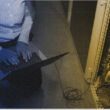Your Fire Insurance Policy is usually the first line of defense when it comes to safeguarding your business assets or property. It can be a factory, office, warehouse, or residential building; Fire Insurance provides much-needed protection against fire, lightning, explosion, and other related perils.. However, the majority of policyholders believe that after acquiring a standard Fire Insurance cover, they are comprehensively covered. Regrettably, it is not usually the case.
A basic Fire Insurance Policy is an insurance that covers direct physical loss as a result of fire or related perils. But in reality, fire accidents may cause a cascading effect of losses related to debris cleanup, damaged machinery, loss of revenue, or expenditure on professional services in re-building. Not all these are included in a standard plan.
This is where add-on covers or policy extensions come into play. They seal the loopholes that the majority of people do not consider. They will also ensure that your insurance cover will safeguard you against all possible damages by fire. In this article, we will discuss 10 commonly ignored covers in a Fire Insurance Policy that all property owners or businesses need to take into consideration.
The Scope and Limits of a Standard Fire Insurance Policy
A standard Fire and Special Perils Policy (SFSP) is a policy that protects against fire and related perils like lightning, explosion, aircraft damage, riot, storm, flood, cyclone, and impact damage. It is intended to protect buildings, machinery, stocks, and furniture and other physical assets.
The drawbacks of this policy, however, usually come as a surprise to policyholders. As an example, it does not necessarily cover such things as debris clearance, rent losses, or professional fees incurred during a restoration. There also may be indirect losses such as losses related to fire-fighting or the cost of temporary relocation, which may not be covered under the standard terms.
It is important to understand these coverage exclusions since during a post-fire scenario, these secondary costs may play a major role. The add-on covers mentioned below can significantly benefit you when you make a claim.
1. Coverage for Debris Removal
When there is a fire, what matters the most is the visible damage. However, as soon as the fires are extinguished the actual work starts with the removal of the debris and the cleaning of the place. Removal of the debris might be surprisingly expensive, particularly on huge commercial or industrial structures.
The Debris Removal Cover will guarantee that these expenses are compensated. It includes the cost of clearing the debris in the insured premises following a fire or other covered perils. In the absence of this add-on, policyholders would be forced to incur such cleanup costs on their own, which might easily amount to lakhs of rupees.
For example, a warehouse fire that destroyed goods worth ₹2 crore might require nearly ₹10–15 lakh simply to remove and dispose the debris. This little extension can protect you against such unexpected financial shocks.
2. Coverage for Expenses Towards Fees to Architects, Surveyors and Consulting Engineers
Reconstruction after a fire isn’t as simple as rebuilding walls. It often involves detailed architectural planning, engineering assessments, and compliance with safety regulations. These professional services can form a significant part of the rebuilding cost.
The Architects’, Surveyors’, and Consulting Engineers’ Fees Cover reimburses the expenses incurred for professional services during restoration. This extension ensures that you can rebuild correctly and safely without worrying about additional costs.
Commercial and industrial property owners, in particular, benefit from this add-on since their restoration often involves technical design work and regulatory approvals.
3. Loss of Rent or Rental Value Cover
If your insured property is rented out and becomes uninhabitable due to a fire, you lose a crucial source of income. Similarly, if you are a tenant and your business operations halt, you may still be liable for rent payments.
The Loss of Rent or Rental Value Cover protects against such financial loss. It compensates property owners for the rent that would have been earned had the fire not occurred. For tenants, it can cover ongoing rent or temporary relocation costs.
For landlords and property investors, this cover is a must-have, ensuring that a fire incident doesn’t disrupt cash flow or property investment returns.
4. Temporary Relocation or Alternative Accommodation Cover
Following a fire, companies may have to change their offices or warehouse sites temporarily and homeowners may have to change to a rental accommodation. There are extra expenses associated with such transitions such as rent, setup, and even transportation or temporary facilities.
The Temporary Relocation or Alternative Accommodation Cover is used to reimburse these extra living or operating costs. It ensures continuity for businesses and comfort for homeowners throughout the restoration phase.
Take the case of a tiny retail store that has been hit by fire- it may require hiring another store to continue with business. This cover would assist in paying the rent and establishment expenses of that temporary space.
5. Fire Extinguishing Expenses Cover
Although fire extinguishing systems are life savours, they can also cost a lot of money. Any refilling of extinguishers, availing of fire brigade services or post firefighting activities require costs that are not necessarily included in standard Fire Insurance policies.
The Fire Extinguishing Expenses Cover compensates these expenditures and ensures that your attempt to contain the fire does not add up to become another financial setback.
In the case of manufacturing units where fire safety equipment is a mandatory requirement, this add-on provides critical coverage for both the preventive and reactive measures undertaken during an emergency
6. Escalation Clause Cover
Inflation and market fluctuations can significantly impact the cost of rebuilding or replacing assets. What you insured for last year might not reflect the current market value.
The Escalation Clause Cover allows for a pre-determined percentage increase (usually 5–10%) in the sum insured to account for cost escalations during the policy period. This ensures that your claim payout reflects actual replacement costs at the time of loss.
This add-on is particularly useful for long-term industrial or construction projects, where the value of assets tends to rise during the policy term. It prevents underinsurance and ensures full recovery value.
7. Spoilage or Deterioration of Stocks Cover
A fire doesn’t always need to destroy goods directly to cause losses. Sometimes, smoke, heat, or water used during firefighting can spoil stocks, raw materials, or perishables.
The Spoilage or Deterioration of Stocks Cover compensates for such indirect damages. For industries dealing with food, chemicals, or pharmaceuticals, this add-on is indispensable.
Imagine a cold storage facility where a minor fire causes the refrigeration system to shut down. Even if the flames don’t touch the goods, the temperature rise can render the entire stock unusable. This cover ensures that such losses are financially protected.
8. Machinery Breakdown Due to Fire Suppression Activities
During firefighting, machinery and electrical equipment may get damaged due to water, foam, or other extinguishing chemicals. These damages are often not covered under the basic fire insurance policy.
The Machinery Breakdown Due to Fire Suppression Activities Cover provides protection against such collateral damage. It ensures that you can repair or replace damaged machinery without facing unexpected repair bills.
For factories and industrial units, where heavy machinery forms the backbone of operations, this add-on can save significant downtime and replacement costs.
9. Impact Damage and Leakage Due to Automatic Sprinkler Installations
Automatic sprinkler systems are very important in controlling fires but at times, they may fail or leak water when there is no fire. This may cause destruction to stock, furniture or equipment.
This coverage offers protection against losses caused by accidental water discharge or physical impact from sprinklers or other installations. In commercial facilities, data centers, and retail stores, this cover will help make sure that preventive systems do not turn into sources of additional damage.
10. Coverage for Removal to Prevent Further Damage to Property
In many fire incidents, employees or owners act fast to move undamaged goods or equipment to other safe locations.In the process of relocation, however, property can be scratched, dented, or even partially damaged.
This cover in Fire Insurance compensates losses or expenses incurred in the course of ensuring that the property is not damaged more. It understands the significance of prompt protection measures and makes sure that they do not lead to loss of revenue.
This cover particularly applies to warehouses and manufacturing plants, where large amounts of materials may have to be relocated in case of an emergency.
The Importance of Businesses Reviewing their Fire Insurance policies on a regular basis.
It is not sufficient to have fire insurance, but maintaining it is also crucial. As time goes by, your business might grow, acquire new equipment, or renovate structures, and this might result in alterations in your insurance requirements. You will end up being underinsured unless you update your policy on a regular basis.
An annual examination of fire insurance will allow detecting gaps in coverage, revising the value of assets, and introducing new extensions. Insurers and brokers can help tailor your policy to your present risk profile.
As an example, when a business decides to grow and add an additional production unit or storage, it must immediately raise its sum insured and include applicable cover such as machinery breakdown or spoilage protection.
Periodic policy review keeps your coverage up to date as your business changes, and provides full financial coverage when you need it the most.
Final Thoughts:
A standard fire insurance policy provides a good foundation, but it often leaves critical gaps uncovered. In real-world fire incidents, losses aren’t limited to burning walls and roofs—they extend to cleanup, business interruption, damaged machinery, and professional reconstruction costs.
By adding the right fire insurance extensions, you can transform a basic policy into a comprehensive shield that covers every aspect of post-fire recovery. Debris removal, loss of rent, professional fees, spoilage, and escalation clauses are not optional—they are essential in today’s risk landscape.
In essence, the true strength of a fire insurance policy lies in the details. Take time to understand what’s missing, consult with experts, and tailor your coverage. Because when a fire strikes, having overlooked covers can be the difference between a temporary setback and a financial disaster.
Comprehensive coverage today means peace of mind tomorrow—and that’s the kind of protection every business deserves.
At BimaKavach, we help you obtain reliable and customizable insurance solutions designed to safeguard your business from unexpected financial setbacks. We will help you obtain comprehensive coverage and absolute peace of mind- so that you can focus more on growth, while these policies handle the risks.








